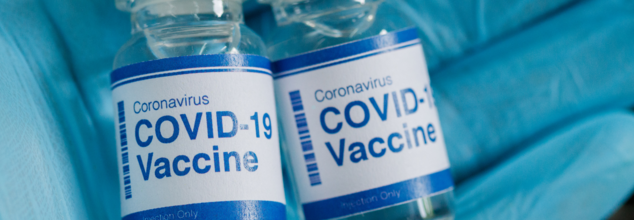- Health Conditions A-Z
- Health & Wellness
- Nutrition
- Fitness
- Health News
- Ayurveda
- Videos
- Medicine A-Z
- Parenting
- Web Stories

Why Elon Musk Is Turning To Surrogacy To 'Birth' His 'Lineage' Of Kids: Could Frequent Sperm Donation Have Side Effects?
Elon Musk, the richest human being in the world and one of the most divisive personalities of our time, is now making headlines for more than his space exploration, AI plans, or electric cars. A new Wall Street Journal expose has highlighted Musk's ambitious pursuit of legacy creation through surrogacy and sperm donation—a move based on his pro-natalist ideology to "battle civilizational collapse" by becoming the father of a large family.
Musk has been said to have fathered at least 14 children with four known women, although insiders claim that number is much higher. The latest installment of this saga comes from conservative influencer Ashley St Clair, who says she gave birth to Musk's child through a highly planned and secretive agreement. From multimillion-dollar settlements to NDAs and courtroom exchanges, the tale is like a sci-fi novel of today—except it's real life, and it spawns ethical and health-related concerns surrounding the application of surrogacy and sperm donation.
Elon Musk is not new to controversy, but this time it's not Twitter (now X) or Tesla shares. As reported by St Clair and the WSJ, Musk has pursued women actively—sometimes within politically sympathetic social networks—asking them to have his children through conventional or surrogate means. The influencer reports being isolated during her pregnancy and being given a reported payment of as much as $15 million, in addition to $100,000 per month support—substantially cut afterward when she spoke out.
This is not the only instance. Pop singer Grimes, Musk's ex-partner, has given birth to three children with him, and Shivon Zilis, an executive at Neuralink, has given birth to twins. There is even talk of a Japanese government official asking Musk for his sperm to donate—a request that Musk allegedly fulfilled. One message, which Musk sent to St Clair, encapsulates the ulterior motive: "To reach legion-level before the apocalypse, we will need to use surrogates."
Though surrogacy per se is not new or immoral when consensual and medically controlled, the Musk model—if these claims are true—raises legitimate questions about power imbalance, consent, and commodification of birth. Paying women huge amounts of money for biological legacy creation, and requiring them to sign confidentiality contracts and waive naming rights, distorts conventional definitions of co-parenting and individual agency.
Additionally, there have been reports indicating that women reportedly were threatened with the withdrawal of financial support if they pursued legal assistance or public debate—creating even more ethical controversy surrounding Musk's practices.
Can Frequent Sperm Donation Be Dangerous?
In a controlled clinical setting, sperm donation is quite safe. Sperm banks that are licensed screen donors thoroughly for infectious diseases like HIV, hepatitis B and C, and syphilis, as well as for genetic defects that can be transmitted to children. Legal safeguards also protect donors from relinquishing parental rights, which in turn protects both the donor and recipient from future legal issues.
Yet, frequent or casual sperm donation, as some accounts indicate Musk might be doing, poses a number of serious health and legal hazards:
Inadequate medical screening can raise the risk of passing on genetic or infectious disease.
Legal uncertainties in casual arrangements can expose recipients to future parental claims or financial responsibility by the donor.
Ethical risks, like an unchecked number of children, might result in unintentional incest among half-siblings who are not aware that they share a parent—especially when donors father kids around the world anonymously.
Psychological Impacts on Donor-Conceived Children
There's also a psychological aspect to this reproductive phenomenon. Sperm donation children tend to struggle with questions of identity, particularly if they learn about their origins later in life. When secrecy is valued—as Musk supposedly demanded in birth certificates and NDA provisions—the emotional toll might be compounded. Studies have found that open communication about donor conception early on leads to healthier psychological outcomes.
While the U.S. permits a variety of surrogacy and sperm donation arrangements, laws differ internationally, and Musk's possible multi-national parentage only makes things more difficult. Nations such as the UK, for example, limit the number of families that one sperm donor can assist in creating (typically ten). Such a limit does not exist in Musk's case, potentially setting up hundreds of biological children without legal or social knowledge of each other.
Additionally, private contracts formed outside of regulation—such as those outlined in the WSJ article—can be questionable across states, leaving both parents and the children vulnerable to legal complications in the future.
Musk's comments imply genuine faith in reversing demographic decline by personal reproduction. He has posted on Twitter repeatedly about the "population collapse" being a greater problem than global warming, terming childbearing as a "moral obligation of the intelligent" but where reproductive freedom gets tied to tremendous wealth and social status, boundaries between vision and ego get confused.

Credits: Canva
Right Before Approval, FDA Again Scrutinizes Novavax Covid-19 Vaccine
The uncertainty around the Novavax's COVID-19 vaccine has been exacerbated by the Trump administration. The new government has imposed new requirements on the nation's only traditional protein-based vaccine. These new requirements have led to many confusions about vaccine updates, including other vaccines too, which await approval.
The Wait For Full Approval Is Too Long
Novavax is the maker of the protein-based COVID-19 vaccine, which was on track to receive full approval from the US Food and Drug Administration (FDA) by April 1. However, the approval process was paused because of Dr Sara Brenner, the FDA's acting commissioner. The reason for delay has raised many questions about the interference, including political, especially after Dr Peter Marks, FDA's longtime vaccine chief had left following disagreements with Health Secretary Robert F Kennedy Jr. These events have further led to the apprehensions of uncertainty regarding the vaccine's future.
As of now, Novavax's vaccine is only authorized for emergency use. Unlike mRNA vaccines form Pfizer and Moderna, which have full approval, the Novavax vaccine holds the EUA or the Emergency Use Authorization, which allows it to be distributed during public health emergencies. However, once the emergency ends, the FDA can remove these vaccines from market unless full approval is granted.
What Caused The Delay?
The FDA had initially planned to approve Novavax's vaccine by its April 1 target date. However, sources familiar with the situation revealed that Trump appointees influenced the delay. Since then, Novavax has been in discussions with the FDA to determine additional requirements for approval. In the meantime, the FDA's recent comments have fueled concerns that Novavax’s vaccine may be treated as a “new product” due to its updates to match last year’s coronavirus strain. This would require new clinical trials, a process unlikely to be completed before the fall.
ALSO READ: Novavax Says FDA Approval Back on Track for Its COVID Vaccine
This approach to Novavax’s vaccine approval stands in stark contrast to the FDA’s treatment of the mRNA vaccines, where annual strain updates have been handled in a way similar to flu vaccines, requiring only small-scale tests to demonstrate the vaccine’s continued effectiveness against new strains. Dr. Paul Offit, a vaccine expert, argued that it would be unnecessary to treat these annual updates as “new products” requiring full trials, as long as the updated vaccines show that they produce protective antibody levels.
Role Of HHS Secretary
Of course Robert F Kennedy Jr will have a role to play, being the Health Secretary, and a known vaccine skeptic. Despite claiming in recent speeches that he is not anti-vaccine, Kennedy’s past associations with anti-vaccine groups have raised alarms. His nonprofit, Children’s Health Defense, has been involved in campaigns questioning vaccine safety, and Kennedy himself has made public statements suggesting that vaccines can cause autism—a long-debunked claim.
His actions have also contributed to the uncertainty that surrounds the Novavax's approval today and the overall direction of US vaccine policies.
Is Novavax Different From Other Vaccines?
What sets Novavax apart from other COVID-19 vaccines is its traditional approach. While Pfizer and Moderna’s mRNA vaccines use genetic instructions to create a temporary version of the virus’ spike protein, Novavax’s vaccine contains lab-grown copies of the spike protein itself. This approach has been used for decades in vaccines for diseases like hepatitis B and shingles, making it a more familiar method for people who may be hesitant about mRNA vaccines.

Credit: Canva
Novo Nordisk Launches Weight Loss Drug Wegovy In Thailand
Danish multinational pharmaceutical company Novo Nordisk has launched Wegovy in Thailand, marking the entry of its hugely popular weight loss drug in Southeast Asian market. First launched in 2021, Wegovy helped make Novo Nordisk Europe's most valuable listed company until recently, worth $615 billion at its peak. Wegovy is a semaglutide shot, which means that it is a GLP-1 receptor agonist.
"We actually received the Thai FDA approval already in 2023," said Enrico Canal Bruland, vice president and general manager of Novo's Thai subsidiary. He noted that Novo was making Wegovy available in Thailand ahead of rival Eli Lilly's Zepbound. Wegovy is currently available for prescription in private hospitals around the country and will be available soon in public hospitals. Notably, Bruland declined to provide details on Wegovy's pricing in Thailand, which has a population of around 66 million, or Novo Nordisk's plans for expansion into other Southeast Asian markets.
Notably, the most popular GLP-1 agonist Ozempic was also created by Novo Nordisk. Earlier this month, the pharma giant expanded its research in the field diabetes and weight loss drug and announced that its diabetes pill, Rybelsus, demonstrated cardiovascular benefits in a late-stage trial. The findings pave the way for the medication to become a new treatment option for people living with both diabetes and heart disease.
How Do Semaglutides Work?
Semglutide is the synthetic version of GLP-1—a natural hormone produced in the intestines that regulates blood sugar, appetite, and digestion. Now, every time you eat, your body produces various hormones, including GLP-1. These are called Post nutrition hormones, and help you absorb the energy you just consumed.
GLP-1 travels to your pancreas, prompting it to produce insulin. It also travels to the hypothalamus in your brain, which gives you the feeling of being full or satiated. Ozempic imitates this hormone, thereby, silencing the food chatter in the brain. Interestingly, for some people this food chatter is really quiet ( people with low appetite) and for others it is an outbrurst, (people who generally binge eat.) So with Ozempic, silencing this self-talk in the brain, people tend to lose their appetite and eventually weight.
However, it is important to note that losing weight includes not just fat but muscle as well. Losing too much muscle can lead to reduced strength and a shorter life span. Notably, records show that most people who start taking them stop it at 12 weeks; therefore, it is important for some but not for others.
Notably, last month, US pharma major Eli Lilly launched the obesity management drug Mounjaro in India at one-fifth of the US price. The company rolled out the drug in a single-dose vial following the marketing authorisation from the Central Drugs Standard Control Organization (CDSCO). It has been priced at Rs 3,500 for a 2.5 mg vial and Rs 4,375 for a 5 mg vial. "It is a first-of-its-kind treatment for obesity, overweight, and type 2 diabetes that activates both GIP (glucose-dependent insulinotropic polypeptide) and GLP-1 (glucagon-like peptide-1) hormone receptors," the company said.

Credits: Canva
Boom Strikes: Why Are Cases Of Head Injuries Among Anesthesiologists Growing?
One moment, Dr Cornelius Sullivan was focused on a patient during surgery, and the next moment, he woke up in ambulance, headed to the emergency room.
According to the American Society of Anesthesiologists (ASA), Dr Sullivan had struck his head on a monitor that had been moved behind him in a surgery center. This serious accident had resulted in a two-night hospital stay and kept him away from work for weeks. However, this is not the first time he had suffered a work-related injury. This is, in fact, the third time this has happened, noted ASA.
"Boom Strikes"
These injuries are often called "boom strikes". These occur when anesthesiologists accidentally bump into operating room (OR) equipment that is mounted on fixed or moveable arms. These could be monitors, lights, or screens.
While any OR staff member could be hurt this way, anesthesiologists are particularly more vulnerable to such injuries. Their work requires them to operate in tight, also, often crowded spaces. It also requires them to move quickly during emergencies, which further increases the risk of collision with equipment.
Why The Problem Is Growing?
As per ASA, the risk of boom strikes have been on the rise. This is also because of an increase in sophisticated equipment being added to operating rooms and surgeries are also now performed in much smaller spaces.
As per a survey conducted by the organization, it was found that more than half of anesthesiologists reported experiencing at least one work-related injury, including head injuries. These numbers have highlighted the growing concern over physical safety in an already demanding and high-pressure environment.
Can New Guidelines Improve Safety?
In response to these alarming findings, the ASA has issued a new Statement on Anesthesiologist Head Injuries in Anesthetizing Locations.
The statement formally recognizes boom strikes as a serious occupational hazard and even a potential medical emergency — especially dangerous during outpatient procedures or in cases where no backup anesthesiologist is immediately available to take over patient care.
Dr. Mary Ann Vann, chair of ASA's Ad Hoc Committee on the Physical Demands of Anesthesiologists, also experienced a work-related head injury. Drawing from personal experience, Dr. Vann helped develop the new safety recommendations, aimed at preventing such incidents.
What Have Been The Key Recommendations?
The ASA outlined several measures to reduce the risk of head injuries among anesthesiologists, including:
Holding Regular Safety Meetings: OR teams should meet frequently to discuss safety concerns and review past incidents.
Creating Safety Teams: Special teams should be tasked with reviewing and tracking reports of boom strikes to identify patterns and solutions.
Involving Anesthesia Staff in Room Planning: Clinical anesthesia personnel should have a voice when designing or rearranging procedure rooms to ensure equipment placement considers movement and space needs.
Tracking Head Injuries: Systematic documentation of head injuries can help health systems better understand causes and outcomes, leading to more informed prevention strategies.
The ASA emphasized that head injuries in the OR are not just minor accidents but events that can have serious consequences for patient safety and anesthesiologists’ health.
By implementing the new guidelines and raising awareness, the ASA hopes to make operating rooms safer environments for all medical professionals — and ensure that anesthesiologists can continue their vital work without unnecessary risk.
© 2024 Bennett, Coleman & Company Limited




